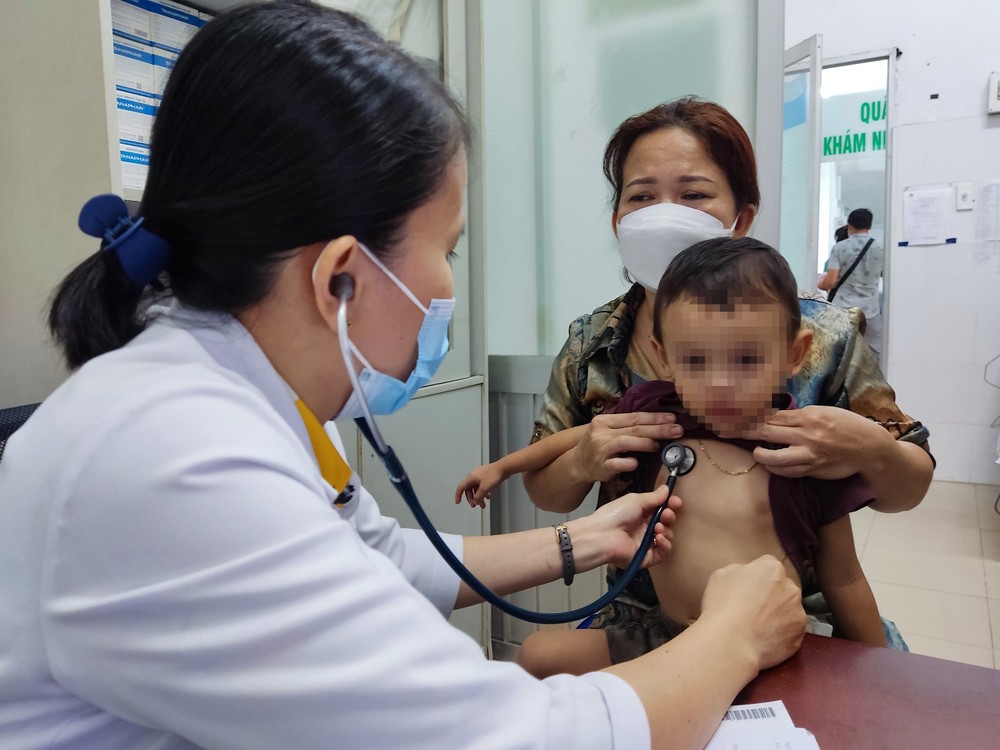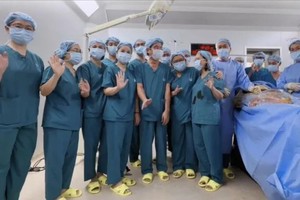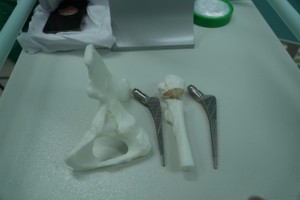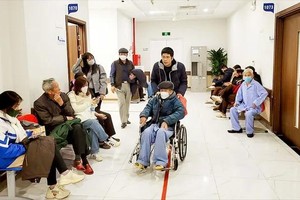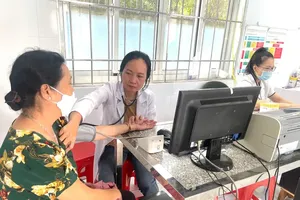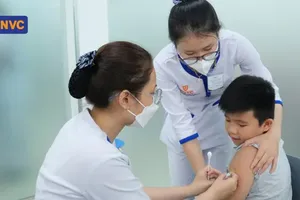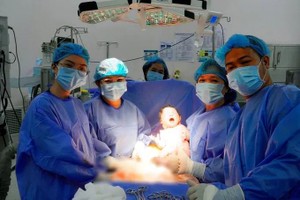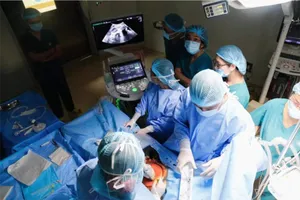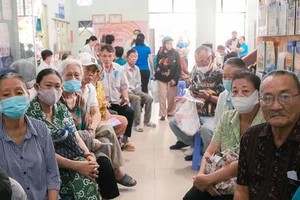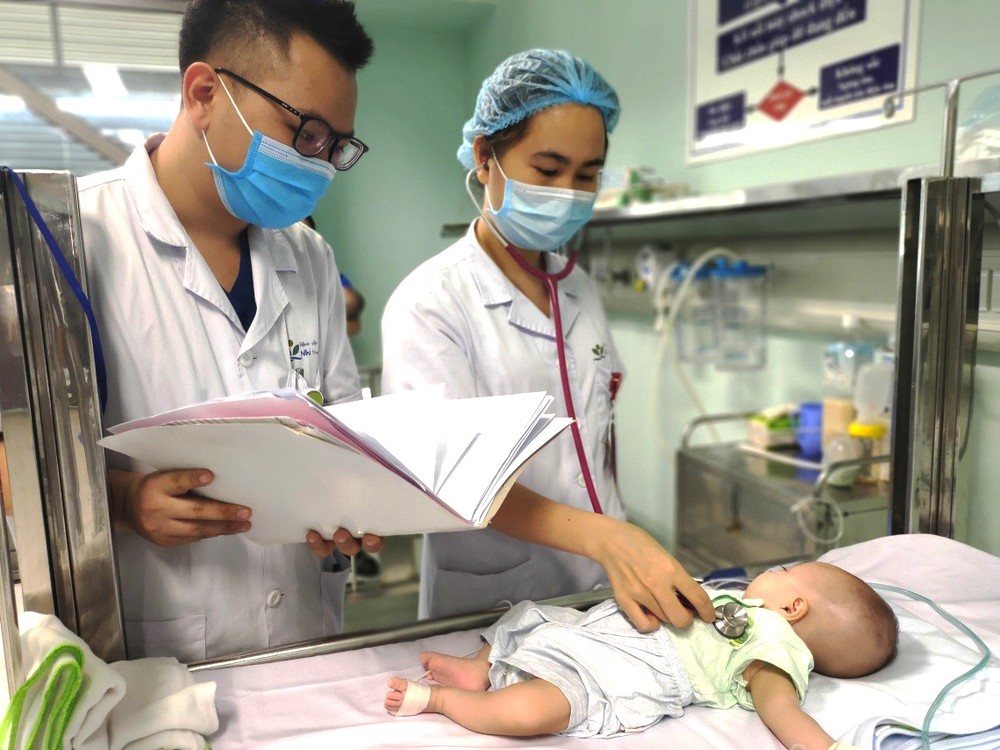
In the Northern region, the onset of winter has brought about colder temperatures and stronger cold air masses. It has affected the health of individuals, particularly those more prone to respiratory infections like influenza A, measles, respiratory disease, diarrhea, rubella, chickenpox, and whooping cough. On the other hand, the Southern region is experiencing hot weather, which creates ideal circumstances for the spread of hand, foot, and mouth disease and dengue fever.
Hospital admissions surge due to respiratory issues
According to reports, hospitals in Hanoi and HCMC have witnessed a significant surge in patients suffering from respiratory ailments. Over the past few weeks, the Pediatrics Department at Ha Dong General Hospital in Hanoi has seen an influx of around 200 children seeking examination and treatment for respiratory-related illnesses, predominantly influenza A and respiratory syncytial virus (RSV).
Similarly, in the Pediatrics Department of Lang Son Provincial General Hospital, approximately 100 children are admitted for treatment daily. Among them, over 80 percent present with respiratory-related diseases. Notably, many cases not only have the flu but also exhibit additional complications such as pneumonia, bronchitis, and diarrhea, making the treatment more complex. Furthermore, there is a growing prevalence of various infectious diseases, such as measles, whooping cough, diphtheria, and chickenpox. Despite the passing of the peak period, Hanoi continues to report approximately 2,000 new cases of dengue fever every week.
Mr. Dao Huu Than, Head of the Infectious Disease Prevention Department at Hanoi CDC, shared that Hanoi has recorded over 35,000 cases of dengue fever, indicating a 2.5-fold increase from 2022, with four reported fatalities. Although there is a slight decrease in cases at the moment, it is important to understand that the outbreak is still ongoing, and the situation is far from simple. This emphasizes the importance of individuals staying alert and not neglecting preventive measures.
In HCMC, from the start of 2023 to the end of November 2023, four hospitals—Children's Hospital No.1, Children's Hospital No.2, City Children's Hospital, and Hospital for Tropical Diseases—have attended to 394,447 children for outpatient respiratory examinations. Among them, 147,390 children reside in HCMC, constituting over 37 percent, while 247,447 children come from other provinces, comprising 62.7 percent. The peak of cases seeking examination was observed in October and November 2023. The total number of hospitalized cases for respiratory inflammation in children is 44,471, up 36.5 percent compared to the same period in 2022 (32,585 cases). The overall mortality rate among hospitalized children for respiratory inflammation is 0.37 percent, with a total of 166 fatalities. Most of the deceased cases had underlying conditions such as congenital defects, immune deficiencies, cerebral palsy, Down syndrome, chronic lung disease, metabolic disorders, and systemic lupus erythematosus.
Ten provinces and cities in the Southern region with the highest rates of patient referrals to the four tertiary hospitals for the treatment of respiratory inflammation in children include Dong Nai (8.8 percent), Binh Thuan (8.4 percent), Binh Duong (7.2 percent), Binh Phuoc (6.8 percent), Gia Lai (6.7 percent), Lam Dong (6.2 percent), Tay Ninh (5.7 percent), Dak Lak (5.3 percent), Ba Ria - Vung Tau (4.6 percent), and Long An (4.2 percent), according to the HCMC Department of Health.
Remaining vigilant against Covid-19
On December 15, Associate Professor - Dr. Tang Chi Thuong, Director of the HCMC Department of Health, reported that, as of now, there have been no recent Covid-19 cases in the city's hospital system that necessitate hospitalization. However, it is important to remain vigilant as there is a potential for an uptick in cases in HCMC, considering the recent surge in Covid-19 cases in some countries. Especially, the EG.5 variant, which is currently prevalent in other countries, has yet to emerge in the city.
Given this situation, the Department of Health has urged the HCMC Center for Disease Control (HCDC) to maintain collaboration with the Hospital for Tropical Diseases and the Oxford University Clinical Research Unit (OUCRU) to intensify case surveillance and the monitoring of Covid-19 variants, incorporating into the surveillance for acute respiratory pathogens.
According to several epidemiological experts, the current rise in infectious diseases, particularly those transmitted through the respiratory route, is a worrisome but not unexpected development. Apart from factors like weather conditions, climate change, and environmental pollution, the influence of the Covid-19 pandemic and frequent disruptions in the Expanded Program on Immunization due to vaccine shortages lead to many children not receiving their full vaccination regimen. This increases the risk of contracting diseases significantly when exposed to pathogens.
Given this situation, Mr. Hoang Minh Duc, Deputy Head of the Preventive Health Department under the Ministry of Health, suggests that the current seasonal transition from winter to spring, characterized by unpredictable weather changes, is a contributing factor to the emergence and spread of infectious diseases, especially diseases transmitted through the respiratory route, posing a potential risk for outbreaks. Additionally, as the year-end approaches, heightened trade, tourism, and crowded activities create favorable conditions for the transmission of disease-causing agents, potentially leading to an increase in infectious disease cases.
To combat the spread of infectious diseases, especially those transmitted through respiratory means, the Ministry of Health urges the public not to underestimate the situation and to be proactive in adopting personal disease prevention measures, including wearing masks in healthcare settings, on public transportation, and in crowded areas, regularly washing hands with clean water, soap, or hand sanitizer, using mouthwash, maintaining personal hygiene, keeping the body warm, engaging in regular physical exercise and sports, and ensuring food safety through the consumption of thoroughly cooked and properly handled food—particularly when handling and processing livestock and poultry products.
Specialist Level-2 Doctor Nguyen Thi Ngoc Tram, Deputy Head of the Pediatrics Department at Le Van Thinh Hospital (HCMC), said the hospital has been seeing 150-300 pediatric patients per day for respiratory-related examinations since September. Out of these, 50-70 children per day require inpatient treatment. The Pediatrics Department, initially equipped with 40 beds, has had to add an additional 10-15 beds in the corridors to accommodate the increased demand for inpatient care. Approximately 2-3 percent of the children are critically ill and need oxygen support for breathing. The forecast indicates that the number of cases will continue to rise and persist until the end of the year due to the transitional weather from sunny to rainy and the unusual temperature fluctuations from hot to cold.
